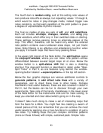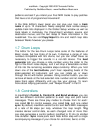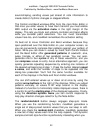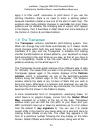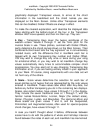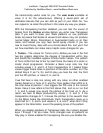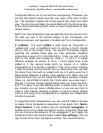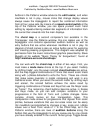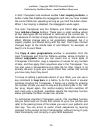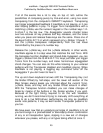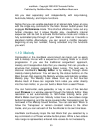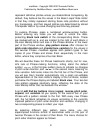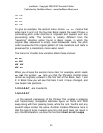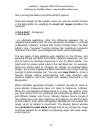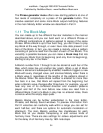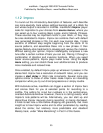maxWerk - Copyright 2000-2007 Amanda Pehlke
Published by RedMoon Music - www.RedMoon-Music.com
28
in both
Transposer
sub-windows
enable
1-bar
looping
buttons
, a
button
mode
that disables the
arpeggiator
and lets you
hear
instead
the
current
Werk bar
repeating
as long as you hold the
button
down.
When
1-bar
looping is
disabled,
the
Arpeggiator
works again.
The main
Transposer
and the Patterns and Chord Map windows
have mid-bar
change
buttons.
These
open a small window where
all four data types can be
entered
or
removed
at the
current
bar. In
the
absence
of
mid-bar
change
data the original bar data
remains
in
effect.
Mid-bar
change
data is not
graphically
displayed,
but it is
copied,
pasted,
and
stored
along with the rest. You'll
hear
mid-bar
changes
begin at the middle beat of odd
Meters;
for
example,
at
beat 3 of a
5-count
Werk.
The
Copy
& save
progressions
window is accessible
from
the
main
Transposer
and
from
the Patterns window, where its
button
is
labeled
copy/paste
. Here you can select one or
more
types of
Transposer
information,
copy a
sequence
of values for any
number
of bars, and then apply them
anywhere
else in the
Transposer.
You
can also save a
transposit
ions-only
data file for later
import
in its
entirety.
Be sure to give your saved Chord files
names
that
remind
you how many bars they cover!
To focus on editing a
particular
section of your Werk, you can use a
key
command
to
loop
bars or a
button
to do this
found
in several
windows including the
Transposer.
It brings up a dialog for
entering
the
number
of bars you want to loop and any
starting
bar in the 128-
bar song. Keyed again, this
section-looping
function
switches off
and linear play is
restored.
maxWerk
reports
the
loop-bars
function
status just below the Main Screen bar
counter.
To
summarize
important
Transposer
points, this maxWerk function
lets you build music on
chords
that consist of up to four pitches and
refer
to the passing tones of the scales you use in your
patterns
and
their key. You can
arrive
at exotic
chord
sequences
by layering
changes
to the various
forms
of
transposition,
without having to play
them consistently and
correctly
on your MIDI
keyboard.



